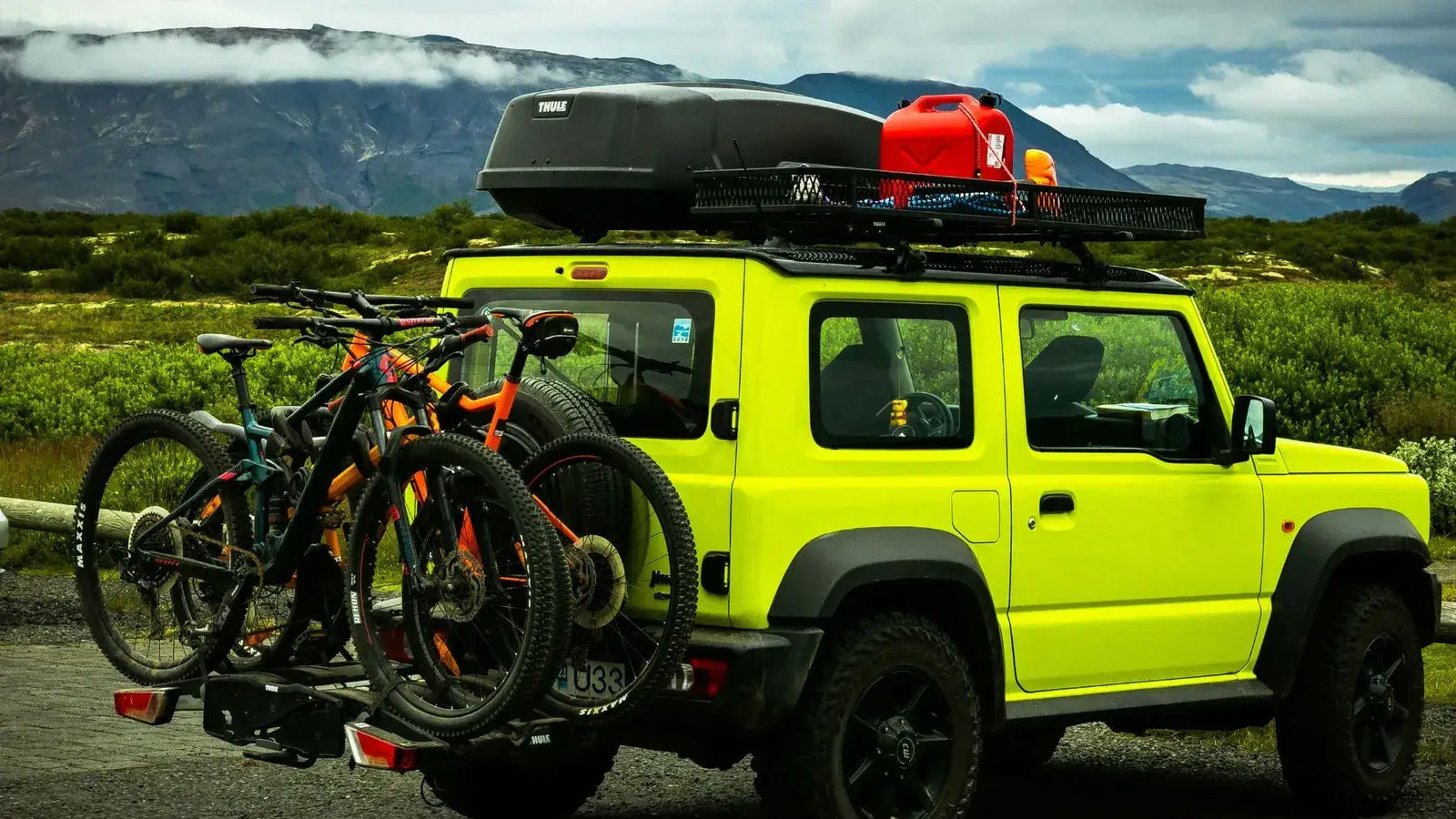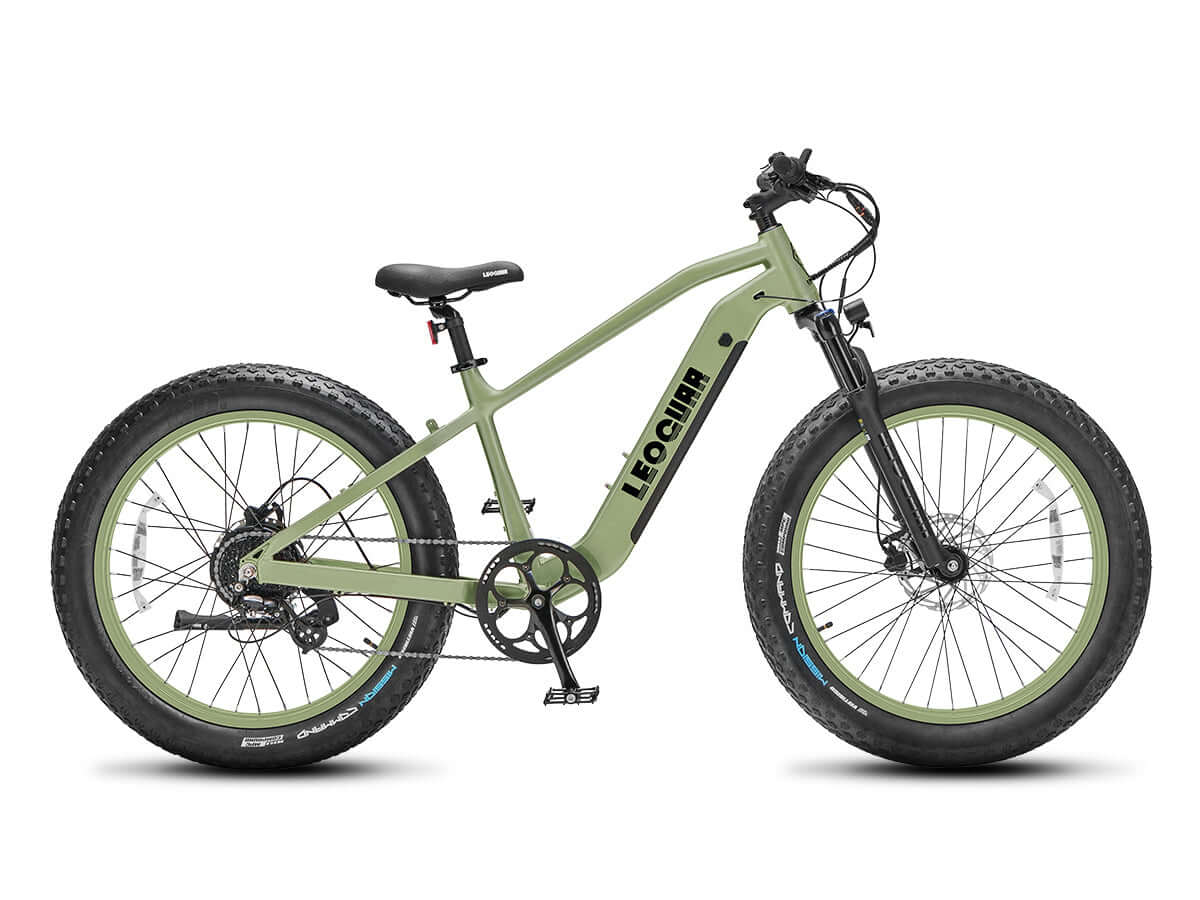
Best Bike on Car Bike Rack Guide for E-Bike Travel
Why E-Bikes Need Special Racks
You bought an amazing e-bike. The freedom and power feel great, but getting your heavy e-bike to cool places can be tricky. Throwing it in your car's back seat won't work, and regular bike racks might not be safe. The problem gets harder when you want one rack for both your car and trailer. This guide helps you pick the right rack and transport your valuable bike safely for both car and trailer setups. We know heavy e-bikes create concerns and want to help you choose wisely.
Before looking at different models, you need to know why e-bikes need stronger racks than regular bikes. Using the wrong rack creates safety risks for your bike, car, and other drivers.
The Weight Factor
Weight is the biggest challenge. Regular bikes weigh 20-35 pounds. E-bikes weigh 50-80 pounds because of the motor and battery, and some weigh even more. This extra weight makes most trunk racks and light roof racks unsafe. These racks can't handle the load. Going over a rack's weight limit can cause it to break while driving.
Frame and Size Problems
E-bikes look different from regular bikes, which creates problems for many racks. Hanging racks that hold bikes by the top tube face several challenges:
- Step-Through Frames: Many e-bikes have low or missing top tubes, so hanging racks can't grab them safely.
- Big Batteries: Fat tubes that hold batteries are too big for standard rack cradles.
- Wide Tires: Fat tire e-bikes have 3-5 inch wide tires that don't fit narrow rack trays.
- Extra Parts: Fenders, lights, and cargo racks can get in the way of bike rack arms.
Protecting Your Money
An e-bike costs a lot of money. A bad rack can make your expensive bike fall on the highway and get destroyed. It can also scratch, dent, or damage your car or trailer badly. The right rack protects your valuable gear.

Car vs. Trailer-Approved Racks
Here's something many new owners miss: a safe car rack isn't automatically safe for trailers or RVs. The forces are very different, and ignoring this can cause serious problems. This is key safety information that makes a big difference.
What RV-Approved Means
When companies say a rack is RV-Approved or Trailer-Rated, they built and tested it for the extreme forces at the back of towed vehicles. The distance from the trailer axle to the rear bumper creates a long lever. Every bump and sway gets bigger, putting much more stress on the rack than it would see on a car. Expert cycling publications often highlight that equipment must be rated for its specific use. Companies test these approved racks hard to make sure they won't bend, crack, or break under repeated stress.
Risks of Using Wrong Racks
Putting a regular car bike rack on a trailer or RV is dangerous. The risks are serious:
- Rack Failure: The extra forces can break the rack, making your bikes fall on the road and creating hazards for other drivers.
- Trailer Damage: The violent motion can damage the trailer by bending or tearing the bumper or hurting the frame.
- No Warranty: Using a rack wrong will cancel its warranty, and damage to your trailer might not be covered either.
How to Check for Approval
Never guess if a rack is safe for trailers, even if it looks strong. Check the manufacturer's website, read the manual, or call customer service. Look for clear words like RV-Rated, Trailer-Approved, or Approved for Recreational Vehicle Use. If it doesn't say so, assume it's not approved.
Choosing a Rack for Your Car
For your main vehicle like a car, SUV, or truck, you have several choices. When moving a heavy e-bike, one type works much better than others.
Hitch-Mounted Racks
Hitch-mounted platform racks are the best choice for e-bikes. They slide into your vehicle's trailer hitch, creating a strong connection to the frame. Their main benefits are high weight capacity and easy loading. Instead of lifting the whole bike, you put it on a platform closer to the ground. Many e-bike models offer ramps so you can roll your heavy bike up onto the rack.
Two standard hitch sizes exist: 1.25-inch and 2-inch. For e-bike weight, a 2-inch receiver works much better because it's more stable and supports higher weight limits. Testing by automotive experts at Car and Driver consistently shows hitch racks offer the best stability for heavy loads.
Roof-Mounted Racks
Roof racks keep your vehicle's back clear and don't block trunk access. However, they're challenging and often risky for e-bikes. The main problem is loading. Lifting a 60-pound e-bike over your head onto a car roof is hard and dangerous. A slip can hurt you or damage your vehicle's roof and paint. Also, a bulky e-bike on the roof increases wind resistance and hurts fuel economy.
Trunk-Mounted Racks
Trunk racks that attach with straps and hooks aren't recommended for e-bikes. Their weight capacity is almost always too low for heavy e-bikes. The straps can stretch, and hooks can damage your car's paint and trunk. These racks are much less stable than hitch racks, making them unsafe for heavy, valuable e-bikes.
Car Rack Types for E-Bikes
| Feature | Hitch-Mounted Platform | Roof-Mounted | Trunk-Mounted Strap |
|---|---|---|---|
| Weight Capacity | Excellent (Often 60-70 lbs per bike) | Fair to Poor (Check limit carefully) | Poor (Typically under 35 lbs per bike) |
| Ease of Loading | Excellent (Low lift, ramps available) | Poor (Requires heavy lifting) | Fair (Requires moderate lifting) |
| Vehicle Access | Good (Many models tilt or swing away) | Excellent (No rear obstruction) | Poor (Blocks trunk/hatch) |
| Security | Excellent (Integrated locks for rack and bikes) | Good (Lock cores available) | Poor (Relies on cables) |
| Price | High | Moderate to High | Low |
| E-Bike Suitability | Highly Recommended | Use with Extreme Caution | Not Recommended |
Your Guide to Trailer Racks
When putting a bike on a bike rack for your trailer or RV, the mounting spot matters as much as the rack itself. You must use an RV-Approved rack, and you have a few special options.
A-Frame Mounted Racks
For travel trailers, an A-frame rack works great. These racks mount on the A-shaped frame at the front of the trailer, between the trailer body and propane tanks or hitch jack. This spot is much more stable than the rear bumper and doesn't have the same strong forces. It also keeps your bikes visible in your mirror. Make sure to measure the space and check that the rack won't interfere with turning.
Bumper-Mounted Racks
Some racks clamp onto 4-inch or 4.5-inch square RV bumpers, but this is the riskiest spot. Most standard RV bumpers use thin steel and aren't rated for the moving weight of a heavy e-bike and rack bouncing down the road. They typically handle only 100-150 pounds of still weight like a spare tire. Putting a heavy e-bike rack here can make the bumper bend, tear, or come off the trailer completely. If you must use a bumper mount, have a professional welder check and possibly strengthen your bumper.
Hitch-Mounted on a Trailer
If your trailer or fifth wheel has a welded 2-inch hitch receiver at the back, this is much stronger than a bumper mount. However, the same rules apply: you must use a rack that the manufacturer clearly rates for RV or trailer use. A standard car hitch rack, even a heavy-duty one, will likely break in this position because of the extra forces. Always confirm RV-Approved status before buying.
Key Features to Look For
When comparing e-bike-rated racks, here are the important features for your checklist.
Weight Capacity Per Bike
This is the most important number. Don't just look at total capacity. Check the per-bike weight capacity and make sure it's well above your e-bike's weight. If your e-bike weighs 65 pounds, a rack rated for 70 pounds per bike is much safer than one rated for 65 pounds. Always remove the battery before loading to reduce weight.
Loading Ramps
For heavy e-bikes, a loading ramp changes everything. Instead of hurting your back lifting the bike, you can roll it up onto the rack's platform. Some racks have built-in ramps that store on the rack, while others offer them as extras. For anyone worried about lifting, this feature is worth the money.
Security Features
Your e-bike attracts thieves. A good rack has a built-in locking system. Look for racks with a lock to secure the rack to the vehicle's hitch and locking arms or cables to secure bikes to the rack. Having one key for all locks is a nice bonus.
Tilt and Swing-Away Functions
If you need to reach your vehicle's back area (trunk, hatch, or tailgate) while bikes are loaded, a tilt or swing-away feature is essential. A tilting rack pivots down, letting you open a rear hatch. A swing-away rack pivots to the side on an arm, giving you complete access to your vehicle's back.

Your Final Checklist
Choosing a rack for your e-bike doesn't have to be hard. By focusing on safety and fit, you can find the perfect solution for all your adventures.
Before you buy, check this final list:
1. Weigh Your E-Bike: Know the exact weight with the battery removed.
2. Check Rack Capacity: Make sure the rack's per-bike weight capacity is higher than your bike's weight.
3. Confirm Vehicle Fit: Does it work with your car's hitch receiver size?
4. Verify Trailer Use: If you plan to use it on a trailer, is it clearly RV-Approved?
5. Assess Loading: Are you comfortable with the lifting height, or do you need a ramp?
6. Check Security: Does it have built-in locks for both the rack and bikes?
By following these guidelines, you can confidently pick a bike rack that will safely carry your e-bike on your car, on your trailer, and to your next great ride.
Frequently Asked Questions
Can I use a regular bike rack for my e-bike?
Most regular bike racks can't safely handle e-bikes because of weight limits. E-bikes typically weigh 50-80 pounds while regular bike racks are designed for bikes weighing 20-35 pounds. Using an undersized rack risks rack failure and damage to your bike and vehicle.
What's the difference between a car-approved and RV-approved bike rack?
RV-approved racks are specially engineered and tested to handle the extreme forces at the back of trailers and RVs. The distance from trailer axles to rear bumpers creates amplified bouncing and swaying forces that regular car racks can't withstand safely.
Do I need to remove my e-bike battery before loading it on a rack?
Yes, you should always remove the battery before loading your e-bike. This reduces the weight you need to lift and protects the expensive battery from road vibration and potential theft. Store the battery securely inside your vehicle during transport.
What type of hitch receiver do I need for an e-bike rack?
A 2-inch hitch receiver is strongly recommended for e-bike racks because it provides better stability and supports higher weight capacities than a 1.25-inch receiver. The larger size handles the stress of heavy e-bikes much better.
How do I know if my trailer bumper can support a bike rack?
Most standard RV bumpers are only rated for 100-150 pounds of static weight and use thin steel construction. They're not designed for the dynamic forces of heavy bikes bouncing down the road. Have a professional welder inspect and possibly reinforce your bumper, or choose an A-frame or hitch-mounted option instead.









































Leave a comment